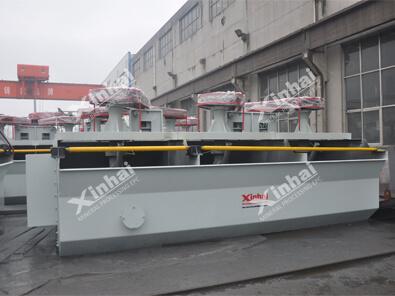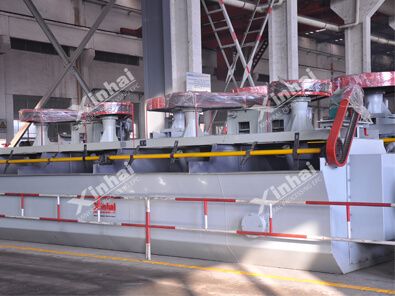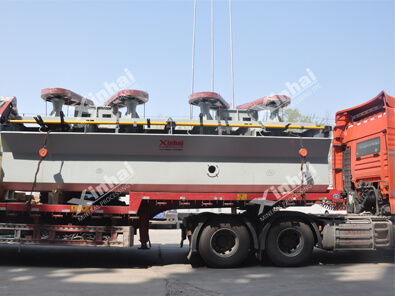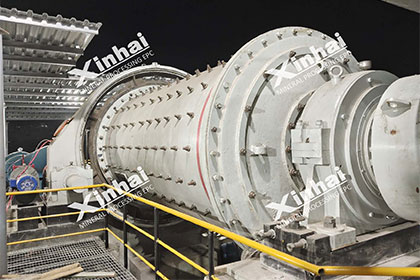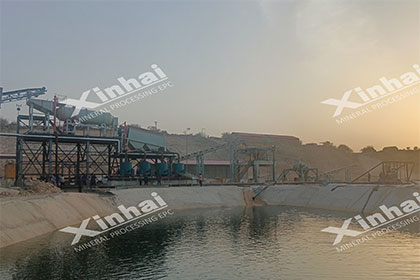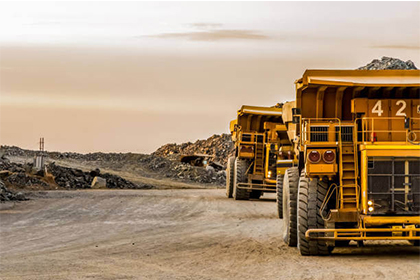What is Flotation Process in Mining Industry?
 Laura
Laura
 May 23, 2022
May 23, 2022
 2597
2597
If you want to know more details about equipment, solutions, etc, please click the button below for free consultation, or leave your requirements!

(1000tpd flotation plant in a gold mine in Laos)
The flotation process refers to the general term for the ore pulp flowing through each operation during ore flotation. In the flotation operation, different types of ore should be treated with different flotation procedures. Therefore, the flotation process can reflect the process characteristics of the ore. At present, common flotation processes include preferential flotation process, mixed flotation process, partial mixed preferential flotation process, and other flotation processes.
Let's get started!
01 Four Main Flotation Processes
Back(1) Priority Flotation Process
Priority flotation process means that the processed ore contains two or more useful minerals, and the useful minerals are selected as a single concentrate in turn.
And the priority flotation process is generally applicable to the following situations:
● The particle size of useful minerals is relatively coarse;
● High content of useful minerals in ore;
● Although higher recovery rate can be obtained by other flotation processes, high-quality concentrates cannot be obtained.
In general, the preferential flotation process can adapt to changes in ore grade and has high flexibility, so it is especially suitable for primary sulfide ores with high raw ore grades.
(2) Mixed Flotation Process
The mixed flotation process is a commonly used process in the flotation of polymetallic sulfide ores. First, all the useful minerals are mixed and floated, and then the useful minerals in the mixed concentrate are separated one by one. This process is suitable for useful minerals grade comparison. Low (more gangue content) and useful minerals are polymetallic ore with close aggregate symbiosis, complex structure and fine-grained embedded distribution.
The advantages and disadvantages of The mixed flotation process are listed below.
#1 Advantages
Under the condition of rough grinding, a large amount of gangue can be discarded after flotation, which greatly reduces the amount of ore entering subsequent operations, especially the cost of subsequent grinding operations, which reduces equipment investment and electricity. consumption, and save the dosage of pharmaceuticals and infrastructure investment.
#2 Disadvantages
Since there are collectors on the surface of the mixed concentrate, and excess collectors remain in the pulp, it will bring difficulties to the next step of separation. It can be seen that in the flotation separation of mixed concentrate, the key should be to solve the problem of drug removal of mixed concentrate. For polymetallic ores with relatively high grades of useful minerals and coarse-grained inlays, mixed flotation should not be used, but preferential flotation should be used.
(3) Partial Mixed Priority Flotation Process
On the basis of the advantages of preferential flotation and mixed flotation, and closely combined with the characteristics of ore, partial mixed priority flotation process is adopted. First, some useful minerals in the ore are flotated, and other minerals are inhibited, and then other minerals that are inhibited are activated and flotated.
When the grade of one of copper-molybdenum, copper-lead, copper-zinc, and lead-zinc in the raw ore is low, a partial mixed preferential flotation process is often used.
(4) Equal Floating Process
The equal floating process does not completely divide the flotation sequence according to the type of minerals. It divides the minerals to be recovered into two parts, easy to float and hard to float, according to the equivalence or similarity of mineral floatability. Even the same mineral should be floated in batches if there is a large difference in floatability.
And the equal floating process is suitable for processing the same mineral, including complex polymetallic sulfide ores that are easy to float and hard to float. For example, a certain sulfide ore, useful minerals such as galena, sphalerite, pyrite. Among them, there are two kinds of sphalerite that are easier to float and those that are more difficult to float, and this ore can adopt an equal floatation process. The easy-to-float sphalerite floats with galena, and the hard-to-float sphalerite floats with pyrite and then separates.
Compared with mixed flotation, the equal floatation process has the advantage of reducing the dosage of chemicals, eliminating the influence of excess chemicals on flotation, and helping to improve the sorting index. The disadvantage is that it uses more equipment than mixed flotation.
The above are the four most common flotation processes, in addition to asynchronous flotation process, branch flow process, branch flow process, flash flotation, gravity flotation, magnetic flotation, biological flotation, ion flotation, Flocculation flotation, microbubble flotation, positive flotation, reverse flotation, etc. For more details on the flotation process, we can introduce it in detail in the next blog post.
02 Flotation Machine
Back(1) Working Principle of Flotation Machine
The working principle of the flotation machine: the rotation of the impeller generates a centrifugal effect to form a negative pressure. On the one hand, sufficient air is inhaled to mix with the pulp, on the other hand, the pulp is mixed with the medicine, and the foam is refined at the same time, so that the minerals are bound on the foam and float to the pulp. The liquid surface then forms a mineralized foam. The liquid level is adjusted by opening the tail valve, and the foam is scraped out through the overflow or scraper.
(2) 3 Common Flotation Machine types
#1 Inflatable Flotation Machine
This type of flotation machine relies on the rotation of the mechanical agitator to stir the pulp and disperse the air, and the air is provided by the blower. The main advantages are that the air volume is large, the air volume can be adjusted as needed, the wear is small, and the power consumption is low. The disadvantage is that there is no suction and suction The pulp capacity and equipment configuration are not convenient enough, and a pulp circulation pump needs to be added.
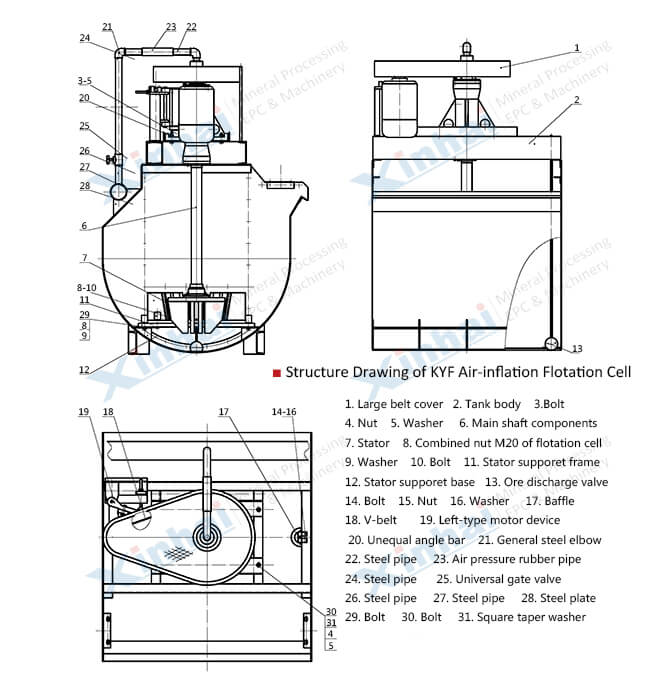
(The structure of a KYF Air Inflation Flotation Cell)
#2 Mechanical Agitator Flotation Machine
This type of flotation machine relies on mechanical agitators (impeller and stator) to realize the aeration and agitation of the pulp. The advantage is that it can self-prime air and pulp, without the need for an external aeration device, and it is easy to achieve self-flow when the middle ore returns, reducing the number of pulp lifting pumps , The equipment configuration is neat and beautiful, and the operation is convenient.
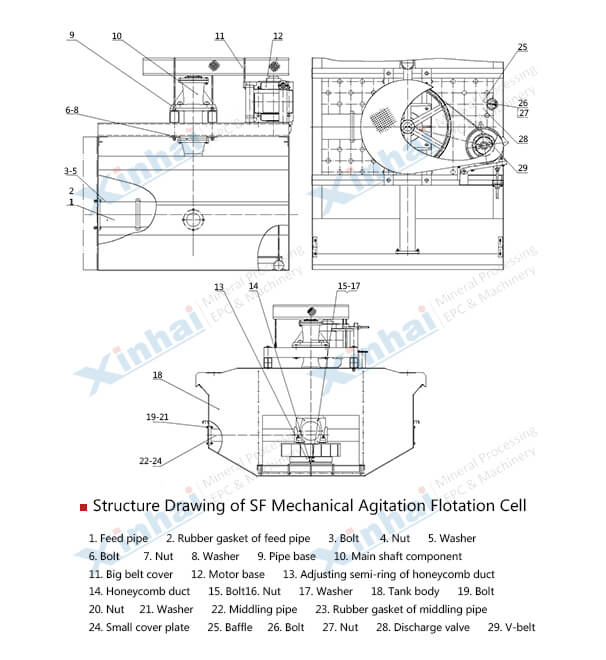
(The structure of a SF Flotation Cell)
#3 Flotation Column
The characteristics of this type of flotation machine are that there is neither agitator nor transmission parts, and the air for inflation or self-priming air is provided by a specially set air compressor. The main advantage is that the structure is simple, it is easy to realize automatic control, and the number of selected operations is reduced.
03 Success Case of Flotation Process
BackBelow we take a flotation plant in China as an example to briefly introduce the project's overview, plans and results.
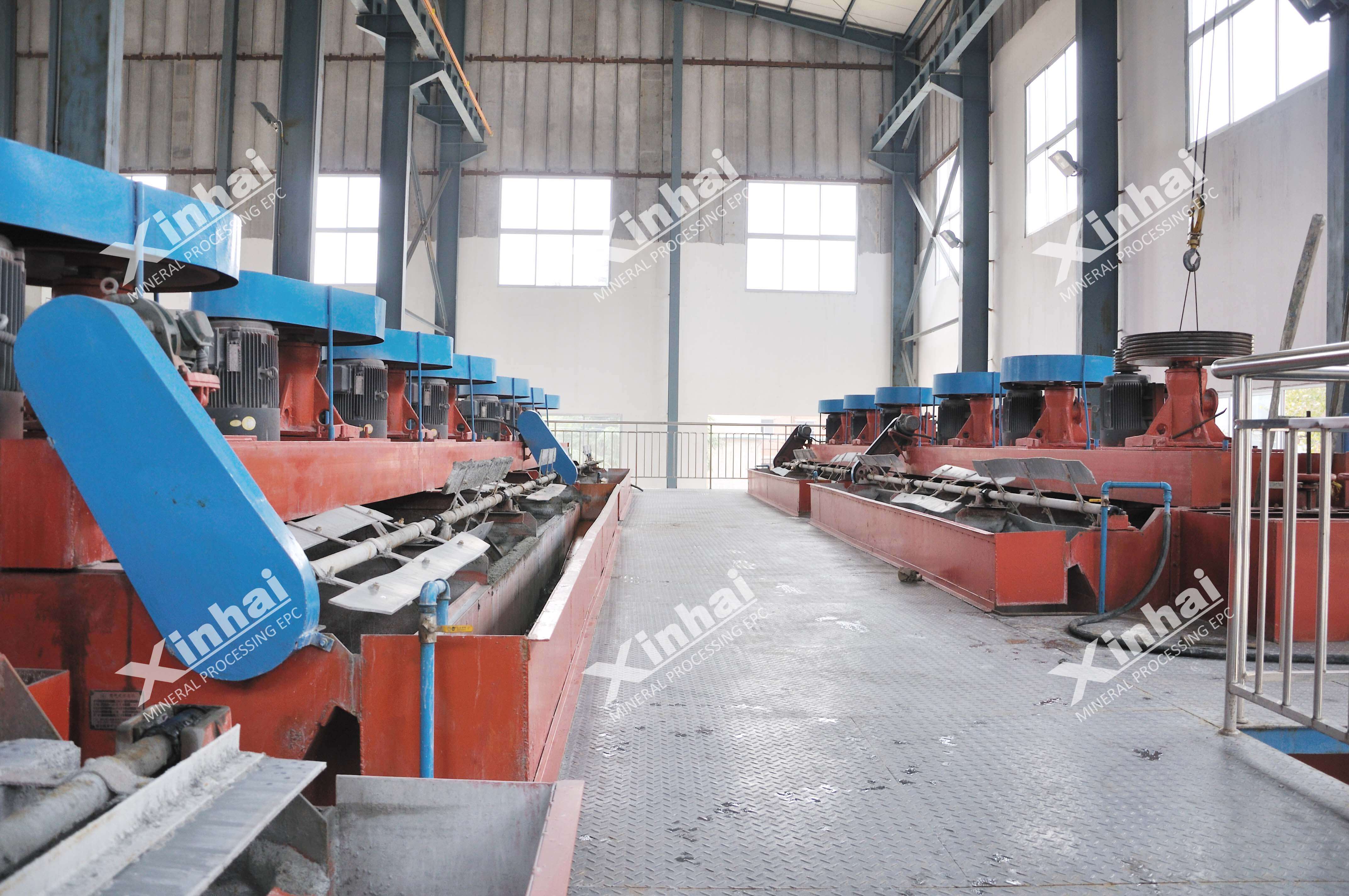
(2011.10 A gold flotation plant in China with 1000tpd)
(1) Project Overview
The deposit is characterized by stable standard minerals, with repeated mineralization stages. The sulfur content is very low, and it is a low sulfide ore. The metal minerals in the ore are: silver-gold ore, gold ore, flash Zinc ore, galena, hematite, etc. Gangue minerals are: quartz, sericite, feldspar, calcite, chlorite, zircon, apatite, etc. The main disadvantage of the deposit is that there is a faulted mud layer, and the distribution of the faulted mud layer is mainly distributed along the main fracture surface, with a thickness of 5-20cm, and the rock is composed of gray-black and gray-white mud.
(2) Project Plan
The first stage of open-circuit crushing and classification-the first stage of open-circuit self-grinding, the first stage of closed-circuit grinding and classification-flotation-concentrate dehydration process flow.
Crushing and grading stage: an open-circuit crushing process is adopted, and the particle size of the crushed final product is less than or equal to 160mm;
Grinding and grading stage: a stage of open-circuit self-grinding and a stage of closed-circuit grinding and grading are adopted, and the grinding fineness of -200 mesh accounts for 55%. In order to increase the content of fine particles, an appropriate amount of steel balls are added in the production process, and the autogenous mill is in a semi-autogenous grinding state; the classification adopts a hydrocyclone, which has high classification efficiency, simple structure, reliable operation and small footprint;
Flotation stage: XCF-KYF combined unit is used, the configuration is simple and reasonable, and the power consumption is reduced; the self-aspirating SF type flotation machine is selected, and the flotation effect is good;
Concentrate dewatering stage: Gold concentrate is pumped to the concentrate dewatering system of the original dressing plant, and tailings are transported to the original tailings pond and underground filling.
(3) Project Results
The gold ore grade of this project is 1.76g/t, the final gold concentrate grade is 46g/t, and the gold recovery rate is as high as 92%. In addition, according to the nature of the gold ore and the characteristics of the design process, it adopts advanced equipment with low energy consumption, high efficiency, reliable operation, superior performance and high degree of mechanization, which is simple and reliable in operation and easy to maintain.
04Summary
BackFinally, when choosing a specific flotation process, it is recommended that each mine owner entrust a supplier with mineral processing test qualifications to conduct mineral processing tests in advance. The selection process must not be blindly copied or decided by itself, which not only wastes ore resources, but also damages the economic interests of the dressing plant. Welcome to click the chat button or the consultation button to learn more about the flotation process and flotation equipment.
 +86 18234403483
+86 18234403483 yanzhang19990421@gmail.com
yanzhang19990421@gmail.com




 Message
Message Chat Now
Chat Now


